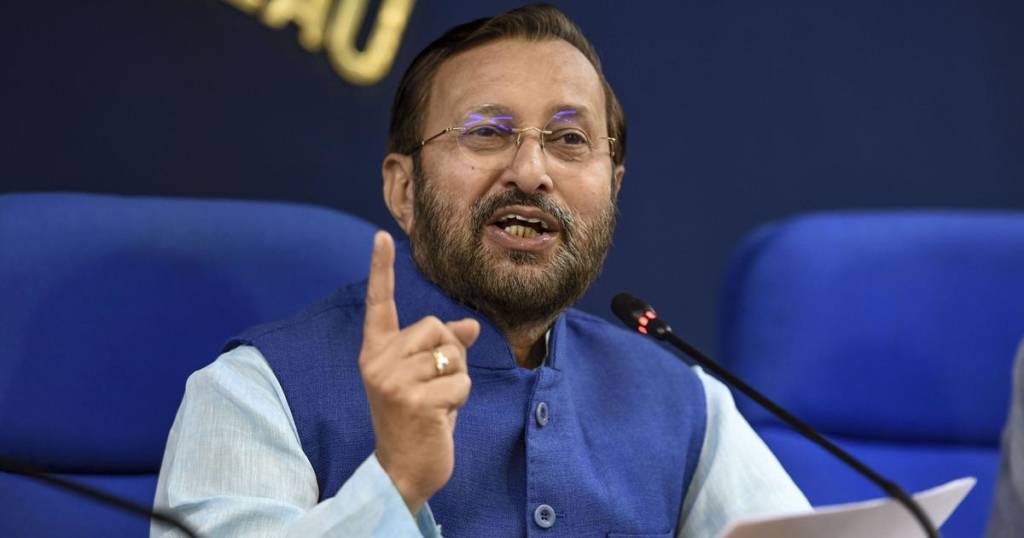The seemingly Left-orchestrated violence at JNU has kicked off a major controversy in India, with foreign media outlets having a merry time distorting facts to suit their petty agendas. First, it was the Financial Times of Britain, and now, it is the usual culprit, New York Times.
To begin with, the Financial Times had been successful in somehow managing to decipher the political ideologies behind the masks of goons who were running amock in JNU. FT went on to proudly proclaim that this mob was a ‘nationalist’ one. To this, senior BJP leader and I&B Minister Prakash Javadekar replied, and comprehensively obliterated Financial Times’ minuscule understanding of India
Dear @FT, Technologists across the world would be eager to get the tech possessed by you, which helps decipher that a masked mob is ‘nationalist’. Also, all universities & institutions in our country are secular.
— Prakash Javadekar (Modi Ka Parivar) (@PrakashJavdekar) January 6, 2020
Then came the New York Times. I will be honest, unfortunately I had to read their shoddy report on JNU before writing this piece, and I can say with a sense of confidence that their reportage on the matter has been a complete cock and bull story narrated in order to deride Hindus and the Indian Right. From claiming that the violence only started after sunset (while there are clear evidence materials to prove that the violence began very much during the day), to reporting only the statements of leftists in which the ABVP is unilaterally accused of initiating violence, NYT has done it all. To top it all, NYT also claimed that the Hindu-nationalist mob scream ‘religious slogans’ and ransacked the campus while chanting Jai Shree Ram. It also called it a ‘battle-cry’.
For those who’d like to have a look at NYT’s report, please make sure you have a look at this detailed report by TFI as a detox, which does not insinuate its own version of the fiasco, instead, supplies sufficient evidence to corroborate multiple claims that the violence was both Left-orchestrated as well as Left-initiated.
After having thrashed the Financial Times, Prakash Javadekar took it upon himself to also deal with the New York Times. Tagging screenshots of the NYT report, Javadekar said on Twitter, “It seems @nytimes consists of the most ardent bhakts of Lord Ram as they seem to find him everywhere. On a serious note, waiting to read @nytimes ground reporting of the violence and religious persecution from Shri Nankana Sahib. Which slogans did they hear there?”.
It seems @nytimes consists of the most ardent bhakts of Lord Ram as they seem to find him everywhere 😂. On a serious note, waiting to read @nytimes ground reporting of the violence & religious persecution from Shri Nankana Sahib. Which slogans did they hear there?@PIB_India pic.twitter.com/lENTO3MLL6
— Prakash Javadekar (Modi Ka Parivar) (@PrakashJavdekar) January 7, 2020
It is important to mention here that the New York Times did not find the attack on the holy Nankana Sahib worthy of its attention and news space, and they did not bother to report on the incident which clearly proves the abhorrent treatment of religious minorities by the Pakistani state. Reporting against Pakistan’s atrocities on its minorities will only consolidate the world’s opinion as a thriving democracy, a gamble which NYT cannot afford to risk. By questioning them on this specific count, Prakash Javadekar has ensured that NYT is left heavily embarrassed for its obvious bias.
Previously, the BBC had termed Jai Shree Ram a ‘murder cry’. The targeted campaign against Hindus and India by certain western media groups is not a new phenomenon. NYT has simply borrowed from the books of BBC its perception about Jai Shree Ram. But here’s the thing, nobody in India cares about the opinions of the New York Times.
